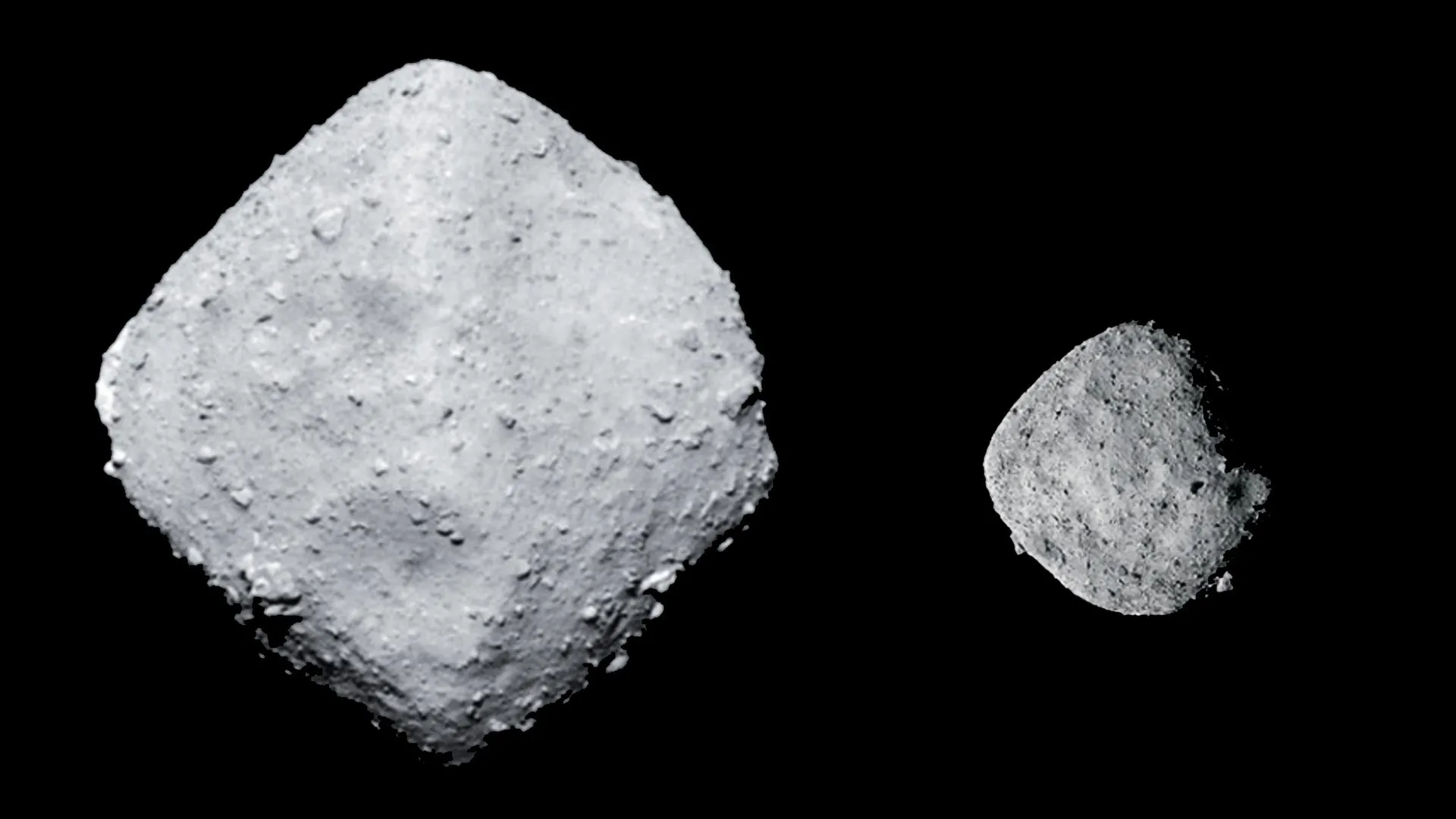Ancient solar system crash may explain Bennu and Ryugu’s origin
Spectral data of main belt asteroid Polana matches returned samples of near-Earth asteroids.
- Date:
- August 21, 2025
- Source:
- Southwest Research Institute
- Summary:
- Scientists from the Southwest Research Institute have found strong evidence that near-Earth asteroids Bennu and Ryugu share a common origin with Polana, a much larger asteroid in the main belt. By comparing James Webb Telescope observations with samples from NASA’s OSIRIS-REx and Japan’s Hayabusa2 missions, researchers discovered spectral similarities suggesting all three were once fragments of the same parent body, shattered in an ancient collision.
- Share:

A Southwest Research Institute (SwRI) review of data collected from near-Earth asteroids Bennu and Ryugu supports the hypothesis that they were originally part of the Polana collisional family in the main asteroid belt between the orbits of Mars and Jupiter.
The study compared spectroscopy data from Polana with spacecraft and laboratory data from Bennu and Ryugu samples, discovering similarities in their near-infrared spectrum sufficient to support the theory that they originate from the same parent asteroid.
"Very early in the formation of the solar system, we believe large asteroids collided and broke into pieces to form an 'asteroid family' with Polana as the largest remaining body," said SwRI's Dr. Anicia Arredondo, lead author of the study. "Theories suggest that remnants of that collision not only created Polana, but also Bennu and Ryugu as well. To test that theory, we started looking at spectra of all three bodies and comparing them to one another."
Arredondo and her team applied for time on the James Webb Space Telescope to observe Polana using two different spectral instruments focusing on the near-infrared and mid-infrared wavelengths. She then compared that data with the spectral data from physical samples of Ryugu and Bennu collected by two different space missions. The Japan Aerospace Exploration Agency's Hayabusa2 spacecraft rendezvoused with Ryugu in 2018 and collected samples returned to Earth in late 2020. NASA's OSIRIS-REx spacecraft encountered Bennu in 2020 and collected samples returned to Earth in late 2023.
Bennu and Ryugu are considered near-Earth asteroids because they orbit the Sun within the orbit of Mars; however, they are not considered a danger to Earth, having a closest approach of about 1.9 and 1 million miles, respectively. Both Bennu and Ryugu are relatively small compared to Polana. Bennu is about one third of a mile in diameter, or about the size of the Empire State Building. Ryugu is twice as large, but Polana dwarfs them both, measuring roughly 33 miles wide. Scientists believe Jupiter's gravity pushed Bennu and Ryugu out of their orbit close to Polana.
"They are similar enough that we feel confident that all three asteroids could have come from the same parent body," Arredondo said.
The team noted that the spectral data from the asteroids had variances and differences, but not enough to disprove the hypothesis that they all share a common origin.
"Polana, Bennu and Ryugu have all had their own journeys through our solar system since the impact that may have formed them," said SwRI's Dr. Tracy Becker, a co-author of the paper. "Bennu and Ryugu are now much closer to the Sun than Polana, so their surfaces may be more affected by solar radiation and solar particles.
"Likewise, Polana is possibly older than Bennu and Ryugu and thus would have been exposed to micrometeoroid impacts for a longer period," Becker added. "That could also change aspects of its surface, including its composition."
Story Source:
Materials provided by Southwest Research Institute. Note: Content may be edited for style and length.
Journal Reference:
- Anicia Arredondo, Tracy M. Becker, Maggie M. McAdam, Andrew S. Rivkin, Stephanie Jarmak, Ian Wong. JWST Spectroscopy of (142) Polana: Connection to NEAs (101955) Bennu and (162173) Ryugu. The Planetary Science Journal, 2025; 6 (8): 195 DOI: 10.3847/PSJ/ade395
Cite This Page: